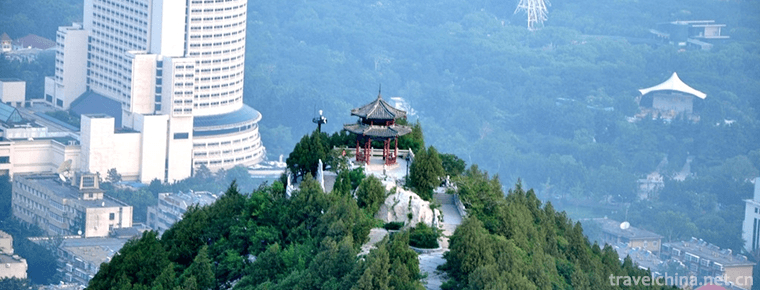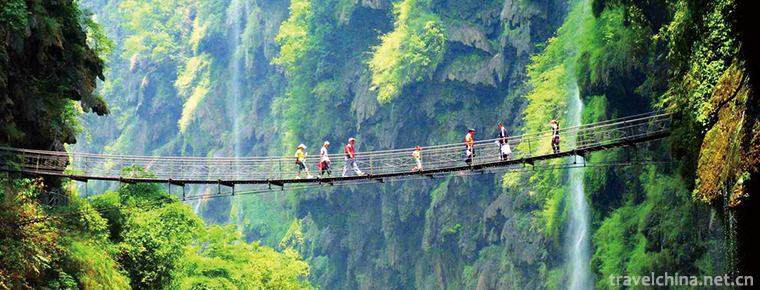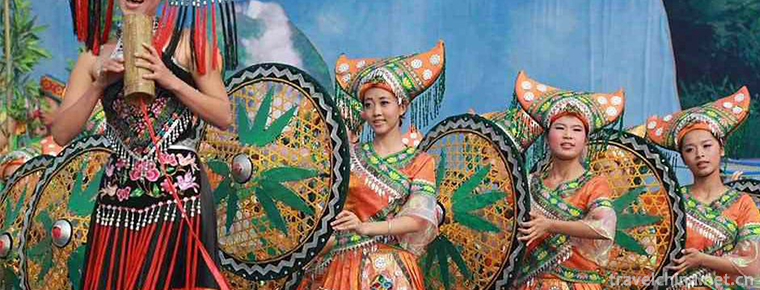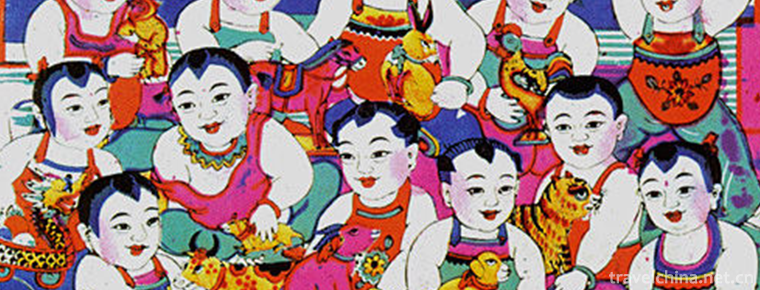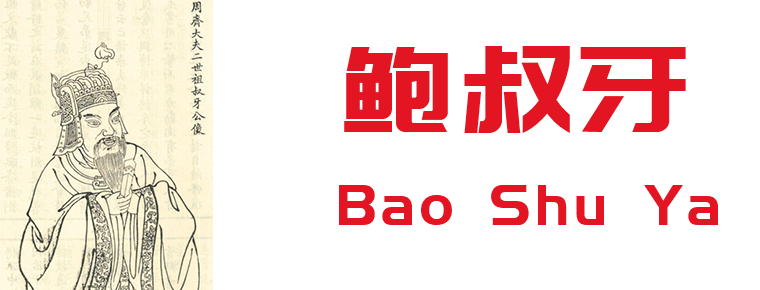West Mountain Scenic Spot of Guiping
West Mountain Scenic Spot of Guiping
Guiping Xishan Scenic Spot, National AAAA Scenic Spot, National Geopark. Located in Guiping City, southeastern Guangxi Zhuang Autonomous Region, Xishan Scenic Spots 1 km away from the outskirts of the city are the main ones, including Jintian Uprising Site of Taiping Heavenly Kingdom, Taiping Mountain Nature Reserve, Yaozhai Style of Zhuangcun Village of Zijingshan, Tianluo Congyan of Tiannan Fudi Tung and Baishidong Tian, Mayi Litchi Township and Xunzhou Ancient City Scenic Spots, etc. Scenic Attraction. The total area is about 20 square kilometers. In 1988, it was listed as a national key scenic spot, and in 2003, it was rated as a national 4A-level scenic spot by the National Tourism Administration. It is a holy place of Lingnan Buddhist jungle. In 2005, it was awarded the Top Ten Scenic Spots in Guangxi. Xishan is famous for its "Lin Xiu, Shiqi, Quan Gan and Tea Fragrance". At the same time, as a sacred place of Buddhism and the seat of Guangxi Buddhist Association, Xishan is also known as the "Buddhist Sage", which can be called the "Five Absoluteness".
Development history
Guiping has a long history. In Dawan Niugukeng, Baishaluo Cluster Rock, Xiaban Kaolin and Shibeiling, Neolithic Beiqiu Cave and Paleolithic Stone Fighting Workshop sites have been found, indicating that Guiping was the place where human beings lived at least 10,000 years ago.
Guiping was the land of Jing and Yang (prefecture) in Xia, Shang and Zhou dynasties, and the land of Xiou Baiyue in Spring and Autumn and Warring States Periods.
Qin
After Pingding Lingnan in 214 B.C., Qin Shihuang led 12 counties in Guilin with its location in Guilin, Nanhai and Xiangxian. They were Bushan, Anguang, Helin, Guangdu, Zhongliu, Guilin, Tanzhong, Lindun, Dingzhou, Neighbor, Zengshi and Yongji. Among them, Bushan County (in the area of Mengwei in Guiping) and Alin County (in the southeastern area of Guiping) were all in Guiping today. It is the beginning of county construction in the city.
Nanyue Kingdom
In 203 B.C., Zhao Tuo, a lieutenant of Nanhai County, began to annex Guilin County and Xiangjun County. Guilin County was changed into Yulin County, and then restored to Guilin County. Bushan County is still the county rule of Guilin County.
Chinese
In 111 B.C., Emperor Wudi of the Han Dynasty destroyed the South Vietnamese State. The original three counties of the South Vietnamese State increased to nine counties. Guilin County was renamed Yulin County, and the county rule was in Bushan County.
Three countries
County territory is the territory of Wu State, which belongs to Yulin County, Guangzhou. It is still called Bushan and Alin County. Yulin County is located in Bushan County.
Jin Dynasty
It still follows the old system of the Three Kingdoms.
Southern Dynasties
In 502 AD, the Liang Dynasty in the South set up Guiping County and Yulin County separately from Bushan County in Yulin County. Bushan County and Alin County still belong to Yulin County, Guiping County belongs to Guiping County, Yulin County belongs to Yulin County, Guiping County is located in Guiping County, and Guiping County is located in Guiping County (now Dawoping County in Xishan, near Gongde Mountain Villa). The name of Guiping began at this time.
Sui Dynasty
In the 10th year of Kaihuang (590 years), Guiping County was abandoned, and five counties, Guiping, Alin, Huanghua, Wuping and Dabin, were successively placed. Guiping, Alin, Huanghua and Wuping are Yulin County, while Dabin County is Yongping County. Among them, Wuping and Huanghua counties were abolished in the first year of Daye (605) and two years respectively.
Tang Dynasty
This county is divided into Xiuzhou and Xunzhou, with nine counties (later six counties) under its jurisdiction, belonging to Lingnan Road. This is a period of the greatest changes in domestic division and integration. Xiuzhou, located in Wude of Tang Dynasty in 621, was originally called Linzhou. The book of New Tang Dynasty, Guangji, was written as Lingzhou, which was renamed Xiuzhou in the next two years. In the first year of Tianbao (742), it was renamed Changlin County, and later it was returned to Xiuzhou. Jurisdiction of Alin, Changlin, Luoxiu, Huanghua, Guicheng, Luyue six counties. Xunzhou, Tang Zhenguan seven years (633), located in Xunjiang River, so it is named Xun. It administers Guiping, Dabin and Lingjiang counties. Zhenguan 12 years (638) abandoned state, longevity first year (692) replaced, Tianbao first year (742) renamed Xunjiang County, Qianyuan first year (758) renamed Xunzhou. The jurisdictions of Guiping and Dabin County remained unchanged along the Sui Dynasty. Lingjiang County is the same year as Xunzhou.
The five generation
This county belongs to the Southern Han Dynasty, and there are five counties in the territory. Among them, Alin, Luoxiu and Changzhou belong to Xiuzhou; Guiping and Huanghua belong to Xunzhou.
Song Dynasty
Kaibao five years (972) waste embroidery state, its jurisdiction into the Rongzhou Puning County (today Rongxian). In the same year, Waste Xunzhou merged its jurisdiction into Guizhou (now Guixian). The next year, Xunzhou will be replaced and Guiping County will be led. Alin, Luoxiu, Changlin, Huanghua and other counties in the county were unified and merged into Guiping County. The county government moved from Dawoping in Xishan to today's urban area. This is the end of Guiping's long-term division of counties.
element
Guiping County belongs to Xunzhou Road, which is located in today's urban area. Xunzhou Road administers Guiping and Pingnan counties.
bright
Guiping County belongs to Xunzhou Prefecture, which runs in today's urban area. Xunzhou prefecture has jurisdiction over Guiping, Pingnan and Guixian counties.
clear
Along the Ming Dynasty, it belongs to Xunzhou Prefecture, which runs in today's urban area. Xunzhou prefecture has jurisdiction over Guiping, Pingnan, Guixian and Wuxuan counties.
In the fifth year of Xianfeng (1855), the peasant revolutionary army headed by Chen Kai and Li Wenmao went up the river to conquer Xunzhou City, designated Xiujing, established Dachengguo, and changed Guiping County to Yongxiu County. At that time, Yongxiu County occupied the majority of Guiping County. In the eleventh year of Xianfeng (1861), Dachengguo failed, and Guiping County was still restored to the system of Qing Dynasty.
Republican China
Invasion of the Qing Dynasty in the Early Republic of China
In the second year of the Republic of China (1913), the prefecture of Xunzhou was abolished and was under the direct jurisdiction of the province. Five years belong to Xunzhou administrative region, Guiping is set up by the government office. Six years of the Republic of China belonged to Cangwu Road. In the fifteen years of the Republic of China, the abandoned roads were converted into Xunzhou District. In the thirty-third year of the Republic of China, it was changed into Wuzhou District. Thirty-seven years of the Republic of China belong to thirteen districts. The thirteenth District commissioner's office is in the present urban area.
After liberation
The People's Republic of China
After the founding of the People's Republic of China, Guiping County belonged to Wuzhou Prefecture at first. July 1951 belongs to Rongxian District. July 1958 belongs to Yulin District. In 1970, the area was renamed as Yulin District. In July 1994, with the approval of the State Council, Guiping withdrew the county to establish a city (county-level city), which still belongs to the Yulin area. In October 1996, the prefecture-level Guigang City was established and Guiping City was replaced by Guigang City.
geographical environment
Guiping Xishan is famous for its "Shiqi, Shuxiu, Tea Fragrance and Spring Gan". Peaks and mountains, tens or even more than a hundred cubic meters of mega-stones stacked, there are strange rocks rugged, winding stone paths. The stone trees are towering, the green shade ramps, and the natural landscape is magnificent. Xishan Tea is well-known and delicious, and is sold far to all parts of the world. Spring Gan has always been praised by the world. People use high-quality milk spring water to brew a lot of sweet agar, known as "Guangxi Maotai" milk spring wine, containing a variety of trace mineral elements beneficial to the human body, "Mohanguo Lu" and other beverages, sweet and refreshing. Every summer, there are bamboo cans beside Ruquan for pedestrians to drink water, scoop a tube of spring water and sip slowly. It is a great pleasure, and it is praised as one of the best in Xishan.
Cradle of milk spring
To the west of Guiping is a part of Longshan Mountains in central Guangxi, known as the cradle of Ruquan. Because of the Mesozoic granite in this area, groundwater is deposited in the physical cracks of rock mass and accumulates water to form springs. This kind of spring water has high molecular density, high surface tension, and contains a special physical phenomenon. It is said that only Hurun Spring in Hangzhou can be comparable to it. Someone has made a performance: until 113 coins were put in, the water bulged like bread at the mouth of the cup, but it did not spill, breaking the rule of "full rule overflow". People who see this special physical phenomenon are all exclaiming. Local people are even more proud. Guiping has a tea-picking tune, which praises Ruquan: "Huayishi, Huayishi, Ruquan water, Xishan tea. This words do not speak to the layman, the layman listened to want to become a monk. "
natural resources
water dripping from stalactites
Under the boulder is the word "Ruquan", written by the ancients. Spring is 1 meter deep, winter is not dry, summer is not overflowing. It is said that during the Buddha's retreat, with the help of the shepherdess, he drank the spring water of the Ruquan and recovered a little bit. He meditated under the ancient banyan tree for seven days and seven nights before becoming a Buddha. According to the Records of Xunzhou Government, Ruquan is as clear as Longjing in Hangzhou, but it's beautiful. Sometimes juice sprays out, white as milk, so it is called Ruquan. "Modern scientific verification confirms that this phenomenon is radon gas institute. When radon gas is ejected with spring water, it is very fast and milky white appears.
Xishan scenic spot has a long history, is the most complete Buddhist holy place preserved in Guangxi, is one of the thirteenth largest Buddhist holy places in the country. Scholars and scholars of all dynasties left over more than 4000 poems in appreciation of Xishan.
Lin Xiu
The forest in Xishan is sea-like, lush and lush, with 98% coverage of trees, more than 130,000 trees and 17,000 cubic meters of timber. The main tree species are pine, banyan, camphor and fish tail sunflower, known as the "four families" of the Xishan jungle. There are more than 100,000 pine trees all over the mountains, the most notable of which is the giant pine of Longli, which is "like a flying dragon on the branches of iron bars, and wearing a royal robe with Qi You Xiong". There are more than 1500 ancient trees over one hundred years old, which fully reflects the characteristics of "many, ancient, big, stubborn, strange, precious and beautiful" trees in Xishan. On the right side of Xishi Temple, there are several rare acacia trees in Guangxi, which are the pillars of the building. In the Journal of Travel published in 1943, it was introduced that the shady west mountain covered the sky, "very much like the Yunqi Bamboo Trail in Hangzhou, and also like the flying peak road of Lingyin Temple, but there are many kinds of trees, strange gestures, and much better than Lingyin".
Shi Qi
The rocks in Xishan Mountain belong to biotite granite, which was formed in the early Mesozoic about 180 million years ago. They have the characteristics of "rudeness and abruptness". They have various forms and are good at each other. There are checkerboard stones with shapes like stone tables, flying stones from unknown sources, some like mountains pulled up flat, some like tigers crouching on the roadside; officials'hidden caves are formed by three huge stones supporting each other, while Yao Wengyan is a natural cave formed in a mountain-like boulder, with a sudden depression on one side. As Master Juzan said in his article "The West Hill of Guiping", it is no exaggeration that "even the stones of the West Hill are more delicious than the flying peaks of the West Lake of Hangzhou, which seem to be arranged in a strange and friendly way".
Spring sweet
Ruquan, located on the left side of Longhua Temple, is one of the most famous springs in Xishan. This is an ancient spring with a width of about 1 metre and a depth of about 1 metre. Winter is endless and summer is not overflowing. Keep a constant water level and water temperature of 22-22 degrees Celsius all year round. "Xunzhou Prefecture annals" said, "this spring is as clear as the Longjing of Hangzhou, and sweet, sometimes juice gushing out, white as milk, so it is called Ruquan". Ruquan is the most suitable natural soft water for drinking because of its clear water quality and low impurities. Spring water contains a lot of natural oxygen, which can evaporate the impurities in tea and wine; the surface tension of spring water is great, and 125 pennies are continuously poured into a full cup of spring water, whose surface protrudes like half wheat bags without water overflowing; when gushing, there is a sudden sound, just like a pleasant silk string, enjoying the reputation of "Ruquan Qinyun".
Tea fragrance
Xishan has abundant rainfall, sunshine and abundant spring. Tea trees were planted in the mountains as early as the Tang Dynasty. By the Ming Dynasty, Xishan tea had already enjoyed high reputation in Guangdong, Guangxi and Hunan. Guiping County Chronicle of the Republic of China records: Xishan tea, out of the Xishan chessboard Shiruquan well Guanyin rock, low plants scattered, green leaves spread, roots suck stone pith, leaves Ying Chaohua, so sweet and fragrant taste, hot days, shelter from the ground Zen House, take milk spring water to boil, put out three batches of vulgar dust, Hangzhou Longjing failed to catch.
Xishan tea, known as chessboard tea, also known as Ruquanchun. It is famous for its tender leaves, fine strips, green color, green tea, clear, refreshing, fragrant and sweet taste. In 1982, Longjing Tea scored 94.65 points over 91.9 points in the national famous tea evaluation. In 1986, Longjing Tea was again rated as the only national famous tea in Guangxi with 94.65 points. It produces more than 50,000 kilograms a year. What's the beauty of this tea: if you have used two rounds of tea soup and leaf buds to scramble eggs, it's a must; chessboard tea fried shrimps, known as "chessboard shrimps", is a famous dish of Guiping.
Main attractions
New Mountain Gate
Guiping Xishan New Mountain Gate is elegant, unique, connected with mountains, and famous, competing with each other. The name of Xinshan Gate is Nantian Yilang, inscribed by Meng Hanliang, a famous contemporary calligrapher from Guiping. The couplets on both sides are 90-word long couplets with profound meaning and meaningful words. They are the cooperation of Confucius Wenxuan and Zou Lu in the Republic of China. In the early 1920s, Sun Yat-sen went to Yong from Guangdong to give a speech. He passed through Guiping and went up to Xishan Mountain. At the banquet, Confucius Wenxuan made a couplet: "Cangwu is to the east, Yongning is to the south, Guilin is to the north, but here lies the front plain, the rear steep ridges, left Guizhou is to the right, intersecting the 24 rivers, where the spirit is concentrated and the talent is to set up dangers." He also said that if people can not answer the couplet, they should not have a banquet. Zou Lululuo, Sun Yat-sen's secretary, after thinking, calmly responded to the following couplet: "wash stone with an anvil, Ruquan with a pavilion, officials with holes hidden, the best place is called old tree, Liu Ji Banqing, Wenge Ciyan, hiding 18 Luohan, traveling to the top, eye low tower foot Lingyun." The above couplet writes about the shape of Xishan, and the next couplet writes about the specific scenic spots of Xishan. Lower couplet to the upload of the vigorous and tender, add a lot of elegant rhyme for the West Hill, so that the world competes to recite!
Since November 16, 2016, Xishan New Mountain Gate has been opened, this beautiful scenery has become a favorite of visitors at home and abroad.
Old eight scenes
1. Journey of Wind and Cloud: The Old Site of Jintian Uprising
2. Buddhist Holy Land: Longhua Temple
3. Landscape Tour: Datengxia Scenic Spot
4. Summer Paradise: West Mountain Scenic Spot of Longtan National Forest Park
5. Taoist Miracle: Baishishan Scenic Spot
6. Strange Journey: Daping Mountain Scenic Spot
7. Rock Moon Scenic Spot: Luocong Mountain Scenic Spot 8. Bright Pearl: Tropic of Cancer Sign Garden
New eight scenes
Linghu Lake
Go straight into the mountain gate, about half a mile, there is a beautiful artificial lake on the right. This is the Xishan Reservoir built in 1954, also known as Linghu Lake. The green waves ripple on the lake, and the surrounding peaks are surrounded by green rings. The scenery of the lake is brilliant, which adds infinite scenery to the West Mountain. Walk across the Jiuquqiao to Huxin Island. The island is shaded by trees, and the green boat floats in the distance. On the west side of the lake, there are swimming pools. In midsummer, tourists enjoy themselves either on the lake or on the lake. Tired of playing, you can also have some tea at Linghu Teahouse by the lake and have a rest.
Dangerous peak Chaoyang
The precipice in front of Guanyin Rock is peculiar. A Pavilion stands on the precipice, facing the east. Photo enthusiasts like to take pictures of the sunrise in Xishan, so it is called Chaoyang Pavilion. If you look over the fence, the scenery is magnificent and magnificent, which seems to be better than Longhua Temple. This is the "Dangerous Peak Chaoyang" in the new scenery of Xishan Mountain.
Ding Quan, Hongqiao
From "step by step" to climb up, about 500 meters, you can see between the eight-zigzag cliff and the dangerous road, a bridge flying frame, like a rainbow, also known as the rainbow bridge. Boarding the bridge. Looking down the hill, I feel like I'm in the clouds. There are trickling streams flowing from the cliff wall beside the bridge, which converge into a clear spring, which is actually the same source as Ruquan.
Long gorge Fairies
About 100 meters above Hongqiao. The gorge is 40 meters long, with high cliffs on both sides and a small road in the middle, which can only be passed by one person. In the gorge, when you look up, you can only see a line of blue sky, so it is also called "a line of sky". According to folklore, people with destiny can often meet gods here. On the stone wall at the entrance of the south end of the Changxia Gorge, there are three big characters inscribed by Master Kuan Neng, "Shenxian Gorge". Originally, Huixian Gorge is also called Shenxian Gorge.
Dragon Pavilion Day
Standing on the cliff cliff under Huixian Gorge, it is a two-story hexagonal pavilion. The ridge of the eaves is decorated with six dragons. They are eager to fly with extraordinary momentum. Here is the highest place of Xishan Scenic Spot, where you can enjoy the new scenery of "Longting View of the Sun". At the end of the river, the river is first reckless and chaotic, gradually turning from dark to bright, showing brilliant sunshine; in an instant, the sun rises like fire, spraying out thin, rising slowly; and then Jinguangdao Wandao, reflecting Xun, Qian and Yu rivers. The earth wakes up from its sleep, the countryside is full of vitality and weather.
Plank road hung Bi
From the Longting Pavilion slowly down the mountain, to take a section of about 300 meters long by the mountain trestle road. The trestle road is winding down the cliff wall, paving stone grade with cement, about 1 metre wide, with side railings. Because of the high terrain, visitors walking on it will have a sense of adventure without fear of danger. Looking from the trestle road, the three rivers are vast and the earth is vast. It is a different kind of sight.
Song Hai Tao
After walking along the trestle road and crossing the dense jungle, "Listen to Songxuan". Here the pine forest is like the sea, the mountain wind blows, making waves, like the sand on the flat ground, like the rain at night in the valley, like the sea to forgive the tide, like the roar of the deep mountain tiger... Previous poems portrayed this scene: "A couch lying on a high mountain, familiar with the stories of tigers, looking up at the thousands of trees shaking, the wind stirred up the tide."
Lixi waterfall
From listening to Songxuan to the north along the stone level and down about 50 or 60 meters, then to Lianxi, the old catfish stream. Because Zhou Dunyi, a Neo-Confucianist of the Northern Song Dynasty, had come to Guiping to give lectures and often traveled to the Western Hills. Later generations named the stream by his nickname. Lianxi has flowing water for many years, and the stream has fallen along the mountain. If the spring is steep and long after the rain, the silver currents are flying down, and the distant vision is like white practice hanging high, and like the green sea rising smoke.
Eighteen wonders of Guiping
The uprising of the Heavenly Kingdom began in Guiping, and twenty Wang Yixiang educated them.
The Temple burned by bombs stands tall, and the God Nibai practises Birthday Shari.
Tens of millions of bats protect litchi and use rice flour as swing riding.
Yao Min invented guerrilla warfare, and the Chairman's inscription was the only one.
Yaojia straw labels do not pick up, the gods and ghosts of the Tianjiao city wall weep.
The Tropic of Cancer has a close voice and no meat, no wine, no seats.
Lingshan heavenly gifts of precious stones, ancient springs are exotic in the world.
When Feifeng joined the cabinet, the president leaned on him and the monkey personally took care of the ambassador.
The Buddha in the heart of the sleeping Buddha is more strange than the Yangyuan and Yinyuan.
Longhua Temple
Longhua Temple in Xishan, Guiping City, was built in the Song Dynasty. It was rebuilt three times during the reign of Emperor Kangxi, Emperor Qianlong and Tongzhi in the Qing Dynasty, and twice again in 1974 and 1988. It is now a reinforced concrete structure. After several repairs, it was restored and opened in 1990. The Pavilion is magnificent and lofty, and the incense is very strong. The pilgrims enter the pavilion and worship in Zen. The Pavilion is full of glory. Longhua Ancient Temple, also known as Shangshi Temple, has been handed down to more than 40 generations of monks. In the early 1930s, Shi Juzan and Shi Jueguang were stationed in Xixi. Now they are stationed in the temple of Guangxi Buddhist Association. Ancient Temple back to Yao Wengyan Feige, Lingxi on the left, Ruquan on the right, down to the blue sky. The main hall is the statue of Sakyamuni Buddha. The Temple of "Daxiong Pao Dian" was titled by Zhao Puchu, former president of the National Buddhist Association, and the temple couplet was written by Shijueguang Master. In front of the hall is the Bell and Drum Tower. Later is the Thousand-Handed Guanyin Hall, "Wood Bird Tree Yin Xianxuan Buddhist monk treasure, Lingxia Mountain scenery as close as Luzhana", which is a gift from Luminous Master to Longhua Temple. Ancient temples rejuvenate light, morning bells and evening drums, Buddhism and Dharma carry forward.
Blue sky
Li Shaolin (Qing Dynasty)
Qingdaoguang 22 years (AD 1842), engraved at the end of the "Biyunshi Path", in regular script, elegant and beautiful font, bold and free strokes, is the best stone carving in Xishan.
Li Shaolin, a native of Jingshan, Hubei Province, was born in Guiping during the Qing Dynasty. He built a house at the foot of Xishan Mountain. He was named "Biaoyou Village". He co-authored "Biaoyou Village Poetry Note" with his wife Cui Juanjuan.
Oto Kyo
Chairman Mao Zedong's Commentary on Twenty-four Histories is highly praised by the historians. He knows a lot about the Yao people's uprising in Datengxia of Ming Dynasty in Guiping. In January 1974, Cen Yunduan, a cadre of the Cultural Bureau of the Autonomous Region, went to Beijing on business to visit Chairman Mao in the Zhongnanhai Sea. In the narration, Chairman Mao mentioned the Yao people's uprising in Datengxia and wrote the words "Datengxia". Cen Yunduan is a treasure. In recent years, Guiping City inscribed Chairman Mao's handwriting "Datengxia" on the cliff wall of the North Bank of Datengxia. Since then, the beautiful and magical Dateng Gorge has added a unique landscape.
Tourism information
traffic
1. Take No. 8 to Xishanmen Station in Guiping City and walk about 50 meters after getting off.
2. Take a taxi to Guiping, and you can get there within 10 yuan.
Special offer
Enjoy 7% discount on tickets with valid documents such as high-speed rail tickets and ID cards. The relevant bills are valid within 3 days.







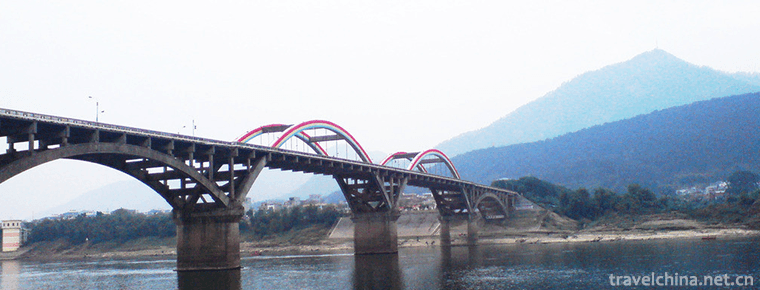
-
Thousand Buddhas Mountain
Qianfo Mountain is one of the three major scenic spots in Jinan. It was called Lishan in ancient times. Because it was called Shun's farming in Lishan in ancient times, it was also named Shun Mountain.
Views: 195 Time 2018-12-26 -
Qianwei ecological village
Qianwei Village is located in the middle of Chongming Island, 23 kilometers away from Nanmen Port, close to Dongping Forest Park. Once a desolate and silent village, now it has both urban scenery and .
Views: 275 Time 2018-12-26 -
Maling River Canyon
Maling River Gorge is located in Xingyi City, Guizhou Province. It is an important member of Xingyi National Geopark and a national scenic spot of the People's Republic of China. It is known as ".
Views: 268 Time 2019-02-06 -
Printing and Dyeing Techniques of Liquidambar formosana
Maple fragrance dyeing and production technology, Guizhou Huishui County, Majiang County, local traditional skills, one of the national intangible cultural heritage..
Views: 223 Time 2019-04-29 -
Martial arts
Jingwu Sports Association originated from Huo Yuanjia's elite gymnastics school founded in Shanghai in 1910. It is a mass martial arts organization with the main activities and tasks of teaching.
Views: 220 Time 2019-05-08 -
Liu Sanjies Ballads
Liu Sanjie's ballad, the local traditional folk literature of Yizhou City, Guangxi Zhuang Autonomous Region, is one of the national intangible cultural heritage..
Views: 202 Time 2019-05-13 -
Yangjiabu woodcut New Year paintings
Yangjiabu wood engraving New Year's picture is a traditional folk engraving which is spread in Weifang City, Shandong Province. Its production method is simple, exquisite craft, bright color, rich con.
Views: 114 Time 2019-07-11 -
Bao Shu Ya
Bao Shuya (the first 723 years or the first 716 years - the first 644 years). Si Surname, abalone His name is a famous uncle. Yingshang (now belongs to Anhui (person) the Spring and Autumn period Qi S.
Views: 167 Time 2019-09-11 -
Huaibei Normal University
Huaibei Normal University, or Huaibei Normal University, is a multi discipline. Provincial Key Universities Selected Infrastructure construction of universities in the central and Western Regions (pha.
Views: 225 Time 2019-11-15 -
Characteristics and types of Chinese embroidery
The main artistic features of hand embroidery are neat patterns, beautiful silk, fresh and elegant colors, rich needlework, appropriate elegance and beauty, and exquisite and exquisite embroidery. As far as the needling methods of embroidery are concerned,.
Views: 230 Time 2020-12-12 -
Hydrological survey of Mianyang
Affected by the landform, Mianyang has abundant precipitation, large runoff, vertical and horizontal rivers and developed water system. There are more than 3000 rivers and gullies in the city. All rivers and gullies flow into Fujiang, Bailongjiang and Xihe.
Views: 335 Time 2020-12-14 -
Population of Yibin
By the end of 2019, the total registered residence of Yibin was 5 million 515 thousand, 8 thousand less than the end of last year, and the registered residence population urbanization rate was 37.87%, which was 2.28 percentage points higher than that .
Views: 146 Time 2020-12-18
